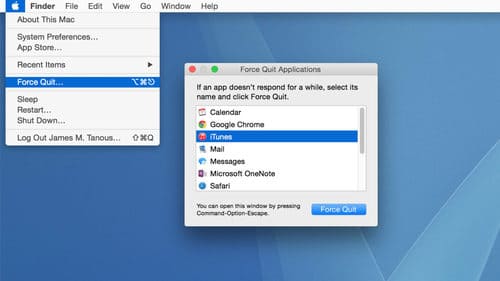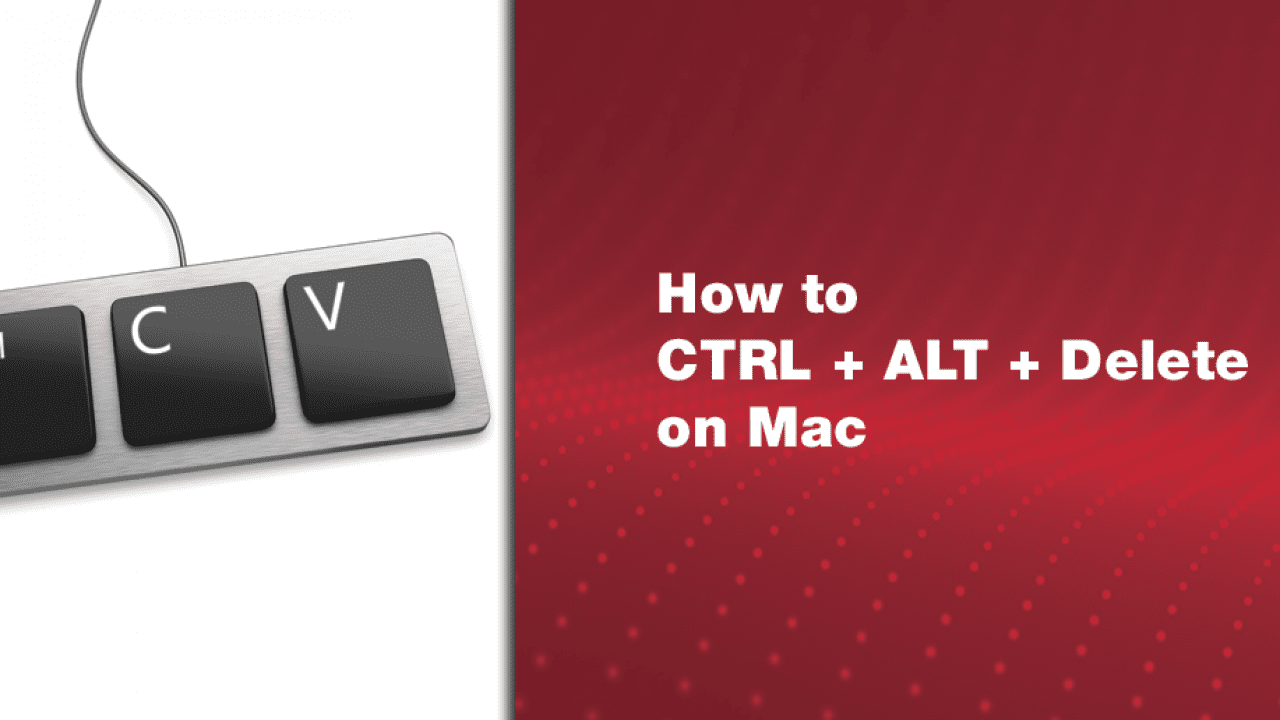Summary :
Symbols used in mac Instead of control alt delete mac. There are a number of new symbols on the keyboard that will also help you navigate the keyboard shortcuts that are used for the function. Command A key that is in the position of the Windows key and is used on a Mac instead of the Control key. Uses the symbol ⌘.
- If you switch to a Mac after becoming familiar with Windows, you’ll quickly find that the standard Ctrl+Alt+Delete shortcut doesn’t do anything. Mac OS X does have its own version of the Task Manager, but it’s a bit different than Windows’, and you access it by pressing Command+Option+Esc.
- Ctrl+Alt+Del You can send the Ctrl+Alt+Del command to a remote Windows computer to view the options for locking the computer, launching the task manager, signing off the current user profile etc. On a remote Mac, sending the Ctrl+Alt+Del command will open the Force Quit Applications window.
- Command + Option + Escape is exactly the Control + Alt + Delete of the Mac. It performs the same task, as soon as you press all these keys together, it takes you to the Force Quit window on Mac similar to Windows.
When you need to force quit a frozen application on your Windows computer, you can press Control+Alt+Delete and select Task Manager, and then select the target application to quit. Are there Control Alt Delete for Mac? MiniTool Solution will introduce how to force quit an application on Mac using Control Alt Delete Mac.
What Is Control Alt Delete for Mac?
On Windows 10, you can use Control+Alt+Delete (also known as Ctrl+Alt+Del) to interrupt a function on your computer and then do some things like switching to a different account, logging off, using Task Manager, shutting down the device, or rebooting your computer. This feature is especially useful when you want to force close a frozen application on the machine.
However, when you switch to a Mac computer from Windows, you will discover that there is no Control Alt Delete Mac available. Then, what is Control Alt Delete for Mac? How to force quit an application on Mac? How to Ctrl Alt Delete on Mac?
The combination keys that are equivalent to Control+Alt+Delete on a Mac computer are Command+Option+Esc. You can see their positions from the following image. However, this combination is not as powerful as Ctrl+Alt+Del on Mac. You can use them to call out the Force Quit Applications interface and then force close the frozen application on your Mac.
After pressing Command+Option+Esc on your Mac keyboard, you will see the Force Quit Applications interface, and your Mac will not be responsible for other keyboard or mouse actions.
How to Force Quit a Frozen Application on Your Mac?
Method 1: Via Command+Option+Esc
If an application hangs on your Mac screen and you could close it or even move it, you can force close it using Command+Option+Esc.

Here is a simple guide:
- Press Command+Option+Esc on the keyboard to open the Force Quit Applications
- Select the application you want to quit and then press Force Quit.
This is the first way to force quit an application on your Mac. You can also use other methods to force close an application that has no response.
Method 2: Via Apple Menu
You can also use the Apple menu to access the Force Quit Applications interface:
- Click the Apple logo that is on the top left side on the screen.
- Click Force Quit from the drop-down list.
- You will see the Force Quit Applications interface. Next, you see select the target application and press Force Quit to quit it.
Method 3: Reboot Your Mac
If you can’t use the above two methods to call out the Force Quit Applications interface and force quit the applications you want to close, you will need to shut down your Mac and reboot it. This can close that frozen application.

For some reason, you need to restart your computer. But, do you know how to reboot Windows 10 in a proper way to avoid unnecessary issues? There are 3 ways.
How to See the Performances of Applications on Mac
Command+Option+Esc on Mac is not the same as Control+Alt+Delete on Windows. You can only see which applications are running and force close the selected application from the Force Quit Applications interface after pressing Command+Option+Esc.
You can’t see how much CPU or memory different applications are currently using on your Mac. You also can’t see the system’s overall resource usage and other statistics like a Windows Task Manager does.
If you want to see these performances, you need to use another service on your Mac. It is Activity Monitor.
- Press Command+Space to open Spotlight search.
- Type Activity Monitor and press Enter to open Activity Monitor.
Alternatively, you can also go to Finder > Applications > Utilities > Activity Monitor to open it.
Now, you can see all processes that are currently running on your Mac, how much CPU each application is using and some other statistics.

In Activity Monitor, you can also see some unknown processes like Windowserver and kernel-task. These two articles introduce these two processes:
Are you new to MAC and trying to find the equivalent of Ctrl+Alt+Delete on a MAC to end a program? Usually when your PC is frozen and you want to end a program, you do a Ctrl+Alt+Delete. If you are someone who is used to working in the Windows operating system and have recently switched over to the MAC operating system, you may be searching to find the equivalent to Ctrl+Alt+Delete on a MAC. The MAC operating system does have its own standard version of the Ctrl+Alt+Delete on a MAC for opening the Task Manager, but it is, of course, different from Windows.

Differences Between the Task Manager in Windows and MAC
In Windows, when you open the Task Manager by pressing Ctrl+Alt+Delete, you can see a lot of features and information. But, in MAC, when you go to the Task Manager, these features are split into different apps. In MAC, you have to use the shortcut Command+Option+Esc to close misbehaving applications.
Function of Command+Option+Esc and Force Quit Option
To force quit misbehaving applications in Windows, you use the Ctrl+Alt+Delete option, but instead of the Ctrl+Alt+Delete, on a MAC the equivalent to it is Command+Option+Esc. This option is very useful when you are in full screen mode playing games or watching videos. By pressing Command+Option+Esc, you can open the Force Quit dialog box. This option works when your MAC is not responding due to some “hung up” application. In some cases, if this shortcut is also not working, then you need to force the machine to shutdown and restart.
The Force Quit window can also be opened by going to the menu bar in your screen and selecting the “Force Quit” option. Once you have the window open, you can scroll down from the list of programs displayed to select the program you need to forcefully close.
Control Alt Delete Mac Windows
Features of the Activity Monitor
Force Quit window will display only the hung up applications. It does not display CPU or memory usage details, resource usage information and a lot of other statistics like the Task Manager does on Windows when you press Ctrl+Alt+Delete. On a MAC, you have to press Command+Space to view such information. It will open up spotlight search where you need to type “Activity Monitor”. Now press the OK button. It will open the Activity Monitor window. Here, you can see the list of programs and other related processes that are running on your computer. Information such as memory, CPU usage, network tab, disk etc. will be displayed here. You can also close the applications that are running currently from here by selecting the corresponding programs and closing it by clicking “X” sign and then click Quit. If the application is not responding, you have to force quit it.
Control Alt Delete Command For Mac Commands
Dealing with Startup Programs
To manage startup programs in Windows we use Ctrl+Alt+Delete. But, instead of the Ctrl+Alt+Delete, on a MAC its equivalent is the “System Preferences” option in the Apple menu. Next, go to the option “Users and Groups” and select the user you want to manage. The applications that are checked under that user will be started at the launch of the system. If you wish to add more applications to your startup programs list, you can drag and drop the application to this screen.
Conclusion
It may be slightly difficult for a user who is used to Windows, but using the above alternatives you can find the equivalent to Ctrl+Alt+Delete on a MAC to manage your work and save time.